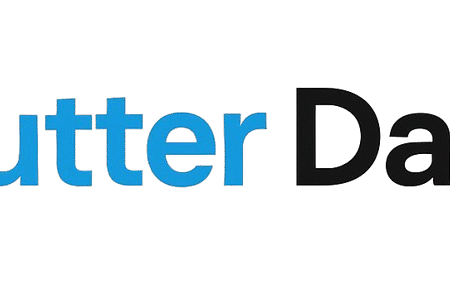The revolutionary iOS 26 update has introduced groundbreaking design paradigms that Flutter developers need to master immediately. Apple’s latest Tahoe design system and the mesmerizing liquid glass aesthetic are transforming how we build cross-platform applications in 2025. This comprehensive guide will show you exactly how to implement these cutting-edge design patterns in your Flutter apps today.
Understanding iOS 26’s Tahoe Design System
Tahoe represents Apple’s most significant design evolution since iOS 7’s flat design revolution. Named after the crystal-clear waters of Lake Tahoe, this design philosophy emphasizes transparency, depth, and natural fluid motion. The system introduces revolutionary concepts that Flutter developers must understand to create competitive iOS applications.
The core principles of Tahoe include adaptive transparency layers, intelligent color shifting based on content context, and seamless transitions that mimic natural physics. These elements work together to create interfaces that feel alive and responsive to user interaction while maintaining exceptional performance on modern iOS devices.
Key Features of Tahoe Design
Tahoe introduces several groundbreaking features that Flutter developers can leverage immediately. The dynamic blur system adapts to background content in real-time, creating depth without sacrificing readability. Smart material surfaces automatically adjust their opacity based on scroll position and content hierarchy. The new elastic animation curves provide more natural motion that responds to user gesture velocity and device capabilities.
Implementing Liquid Glass Effects in Flutter
The liquid glass aesthetic in iOS 26 creates stunning visual effects that appear to flow and morph like liquid crystal. This design pattern combines glass morphism with fluid dynamics to produce interfaces that feel premium and futuristic. Flutter’s powerful rendering engine makes it surprisingly straightforward to recreate these effects with optimal performance.
import 'package:flutter/material.dart';
import 'dart:ui';
class LiquidGlassContainer extends StatelessWidget {
final Widget child;
final double blur;
final double opacity;
const LiquidGlassContainer({
Key? key,
required this.child,
this.blur = 15.0,
this.opacity = 0.2,
}) : super(key: key);
@override
Widget build(BuildContext context) {
return ClipRRect(
borderRadius: BorderRadius.circular(20),
child: BackdropFilter(
filter: ImageFilter.blur(sigmaX: blur, sigmaY: blur),
child: Container(
decoration: BoxDecoration(
gradient: LinearGradient(
begin: Alignment.topLeft,
end: Alignment.bottomRight,
colors: [
Colors.white.withOpacity(opacity),
Colors.white.withOpacity(opacity * 0.5),
],
),
borderRadius: BorderRadius.circular(20),
border: Border.all(
color: Colors.white.withOpacity(0.3),
width: 1.5,
),
),
child: child,
),
),
);
}
}Advanced Liquid Glass Animations
Creating dynamic liquid glass effects requires sophisticated animation controllers and custom painters. Flutter’s animation framework provides the perfect foundation for implementing these complex visual behaviors. By combining implicit animations with physics-based motion, we can achieve the fluid, organic movement that defines iOS 26’s aesthetic.
class LiquidGlassAnimation extends StatefulWidget {
@override
_LiquidGlassAnimationState createState() => _LiquidGlassAnimationState();
}
class _LiquidGlassAnimationState extends State<LiquidGlassAnimation>
with TickerProviderStateMixin {
late AnimationController _controller;
late Animation<double> _glassAnimation;
@override
void initState() {
super.initState();
_controller = AnimationController(
duration: Duration(seconds: 3),
vsync: this,
)..repeat(reverse: true);
_glassAnimation = CurvedAnimation(
parent: _controller,
curve: Curves.easeInOutCubic,
);
}
@override
Widget build(BuildContext context) {
return AnimatedBuilder(
animation: _glassAnimation,
builder: (context, child) {
return Transform.scale(
scale: 1.0 + (_glassAnimation.value * 0.05),
child: LiquidGlassContainer(
blur: 10 + (_glassAnimation.value * 10),
opacity: 0.15 + (_glassAnimation.value * 0.1),
child: Container(
width: 200,
height: 200,
child: Center(
child: Text(
'iOS 26',
style: TextStyle(
fontSize: 24,
fontWeight: FontWeight.bold,
color: Colors.white,
),
),
),
),
),
);
},
);
}
@override
void dispose() {
_controller.dispose();
super.dispose();
}
}Tahoe Color System Implementation
iOS 26’s Tahoe design introduces an adaptive color system that responds to ambient light, time of day, and user preferences. Flutter developers can implement this sophisticated color management using custom theme extensions and dynamic color providers. The system automatically adjusts contrast ratios to maintain accessibility while preserving the aesthetic integrity of your design.
class TahoeColorScheme {
static Color adaptiveBackground(BuildContext context) {
final brightness = MediaQuery.of(context).platformBrightness;
final hour = DateTime.now().hour;
// Morning colors (6 AM - 12 PM)
if (hour >= 6 && hour < 12) {
return brightness == Brightness.light
? Color(0xFFF5F9FF)
: Color(0xFF1A2332);
}
// Afternoon colors (12 PM - 6 PM)
else if (hour >= 12 && hour < 18) {
return brightness == Brightness.light
? Color(0xFFFFF9F5)
: Color(0xFF2A2520);
}
// Evening colors (6 PM - 12 AM)
else {
return brightness == Brightness.light
? Color(0xFFF5F5FF)
: Color(0xFF1A1A2E);
}
}
static List<Color> tahoeGradient(BuildContext context) {
final base = adaptiveBackground(context);
return [
base,
base.withOpacity(0.95),
base.withOpacity(0.85),
];
}
}Performance Optimization for iOS 26 Features
Implementing iOS 26's sophisticated visual effects requires careful attention to performance optimization. Flutter's Skia rendering engine provides excellent performance out of the box, but liquid glass effects and complex animations demand additional optimization strategies. Key techniques include selective widget rebuilding, efficient blur calculations, and smart caching of rendered layers.
Use RepaintBoundary widgets strategically to isolate expensive blur effects from the rest of your widget tree. This prevents unnecessary repaints and maintains smooth 60fps animations even on older iOS devices. Additionally, consider using custom RenderObjects for complex glass effects that require frequent updates.
Optimized Backdrop Filter Implementation
class OptimizedGlassEffect extends StatelessWidget {
final Widget child;
@override
Widget build(BuildContext context) {
return RepaintBoundary(
child: Stack(
children: [
// Cached background layer
Positioned.fill(
child: DecoratedBox(
decoration: BoxDecoration(
color: Colors.white.withOpacity(0.1),
),
),
),
// Blur effect with performance monitoring
Positioned.fill(
child: BackdropFilter(
filter: ImageFilter.blur(
sigmaX: 10,
sigmaY: 10,
tileMode: TileMode.mirror,
),
child: Container(
color: Colors.transparent,
),
),
),
// Content layer
child,
],
),
);
}
}Responsive Design Patterns for iOS 26
iOS 26 introduces new responsive breakpoints and adaptive layout systems that Flutter developers must accommodate. The Tahoe design system includes intelligent content reflow that adapts to different screen sizes and orientations while maintaining visual hierarchy. Implementing these patterns in Flutter requires a combination of MediaQuery, LayoutBuilder, and custom responsive widgets.
The new Dynamic Island interactions in iOS 26 also require special consideration in Flutter apps. Create adaptive UI components that respond to the Dynamic Island's state changes and provide seamless transitions between expanded and collapsed states. This ensures your Flutter app feels native on the latest iPhone models.
Accessibility Features in Tahoe Design
iOS 26's Tahoe design system places unprecedented emphasis on accessibility without compromising visual appeal. Flutter developers must implement proper semantic labels, ensure sufficient contrast ratios for glass effects, and provide alternative visual cues for users with visual impairments. The liquid glass effects should gracefully degrade for users who have enabled reduce transparency settings.
class AccessibleGlassWidget extends StatelessWidget {
@override
Widget build(BuildContext context) {
final reduceTransparency = MediaQuery.of(context).disableAnimations;
if (reduceTransparency) {
// Fallback to solid design for accessibility
return Container(
decoration: BoxDecoration(
color: Theme.of(context).cardColor,
borderRadius: BorderRadius.circular(20),
border: Border.all(
color: Theme.of(context).dividerColor,
),
),
child: Semantics(
label: 'Glass container with content',
child: YourContent(),
),
);
}
return LiquidGlassContainer(
child: Semantics(
label: 'Liquid glass effect container',
child: YourContent(),
),
);
}
}Testing Your iOS 26 Flutter Implementation
Thoroughly testing your iOS 26-inspired Flutter implementations requires both automated and manual testing approaches. Use golden tests to ensure visual consistency of glass effects across different devices. Performance profiling with Flutter DevTools helps identify bottlenecks in complex animations. Additionally, test your app on actual iOS 26 devices to validate the native feel of your implementations.
Create comprehensive widget tests that verify the correct behavior of adaptive color systems and responsive layouts. Integration tests should validate smooth transitions between different visual states and ensure proper handling of Dynamic Island interactions.
Future-Proofing Your Flutter Apps
As iOS continues to evolve, Flutter developers must build flexible architectures that can adapt to future design changes. Implement design tokens and theming systems that can be easily updated when Apple releases iOS 27 and beyond. Create abstraction layers for platform-specific features to maintain clean code while supporting iOS 26's unique capabilities.
Consider implementing feature flags that allow you to gradually roll out iOS 26 design elements to your user base. This approach enables A/B testing of new visual effects and ensures smooth adoption of the Tahoe design system without disrupting existing users.
Conclusion
iOS 26's Tahoe design system and liquid glass effects represent a paradigm shift in mobile interface design. Flutter developers who master these techniques will create apps that feel truly native on iOS while maintaining cross-platform compatibility. By implementing the patterns and optimizations outlined in this guide, you can deliver stunning visual experiences that leverage the full power of iOS 26's design innovations.
Start experimenting with these implementations today, and remember to continuously test and optimize your designs across different iOS devices. The future of mobile design is here, and Flutter provides the perfect platform to bring these revolutionary iOS 26 features to life in your applications.



